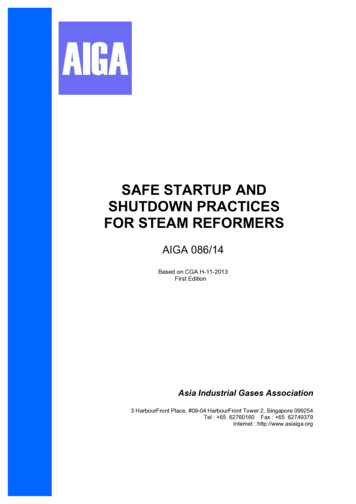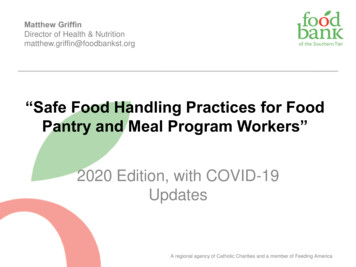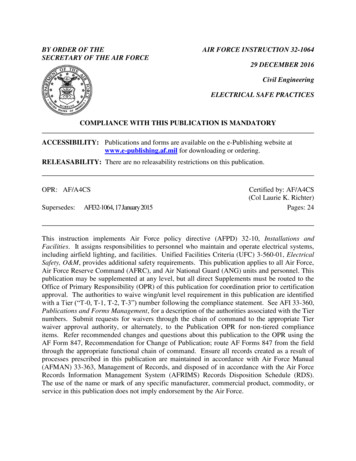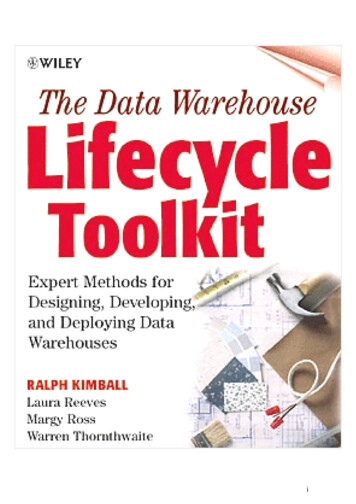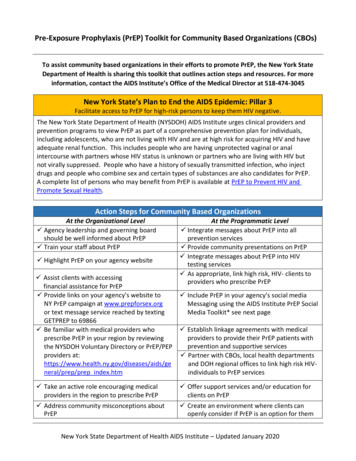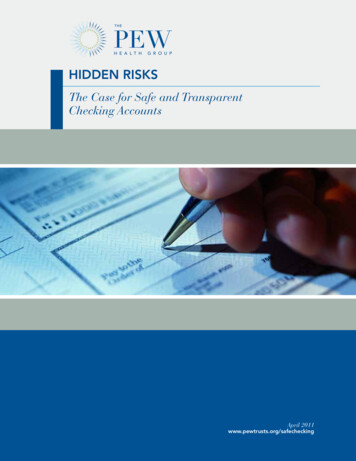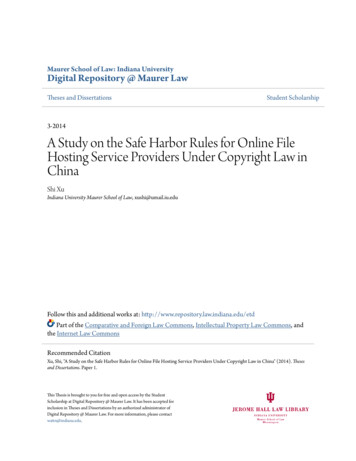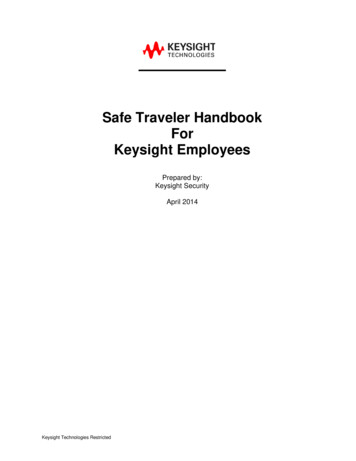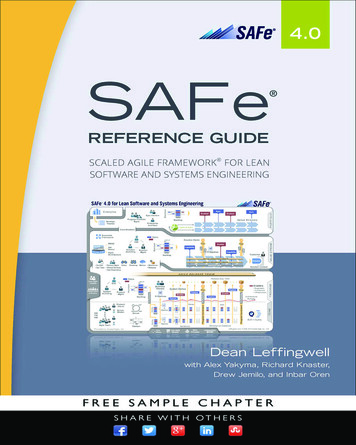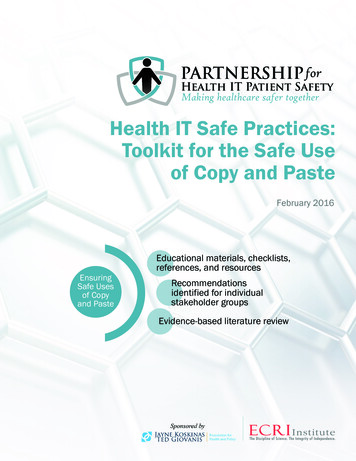
Transcription
PARTNERSHIP forHealth IT Patient SafetyMaking healthcare safer togetherHealth IT Safe Practices:Toolkit for the Safe Useof Copy and PasteFebruary 2016EnsuringSafe Usesof Copyand PasteEducational materials, checklists,references, and resourcesRecommendationsidentified for individualstakeholder groupsEvidence-based literature review
Partnership for Health IT Patient Safety Health IT Safe Practices: Toolkit for the Safe Use of Copy and PastePARTNERSHIP forHealth IT Patient SafetyMaking healthcare safer togetherAcknowledgmentsWe would like to thank those inaugural workgroup participants, including our Workgroup Chair, Tejal Gandhi, MD, MPH,President and Chief Executive Officer of the National Patient Safety Foundation and NPSF Lucian Leape Institute fortheir contributions to the copy and paste workgroup. The workgroup members identified issues, examined suggestedpractices, and assembled the recommendations in this toolkit. We wish to also thank those who shared and presentedinformation to the workgroup that assisted in the development of these safe practice recommendations. The multistakeholder workgroup participants and contributors are listed below:Beth Acker-Moodhard, RHIAHealth Information Management Specialist,U.S. Department of Veterans AffairsKristina M. Hengehold, BSN, MHA, RN, CPNManager, Patient Safety/Infection Prevention,St. Louis Children’s HospitalAllen Chen, MD, PhD, MHSAssociate Professor, Oncology and Pediatrics,and Health IT Patient Safety Officer, ArmstrongInstitute for Patient Safety and Quality, JohnsHopkins UniversityJohn D. McGreevey III, MD, FACPAssistant Professor of Clinical Medicine,Section of Hospital Medicine, Division ofGeneral Internal Medicine, Associate CMIO,University of Pennsylvania Health SystemR. Lacey Colligan, MD, MScSharp End Advisory, LLCAnna Orlova, PhDSenior Director, Standards, AmericanHealth Information Management Association(AHIMA)Landon Combs, MDMedical Director for Epic,Wellmont Health SystemSarah T. Corley, MD, FACP, FHIMSSChief Medical Officer, QSI NextGenHealthcare Information Systems, Inc.Patrick CrossSenior Knowledge and Technology Auditor,Wellmont Health SystemTina Eldridge, RNIT Clinical Program Director, OhioHealthMedCentralDaniel EllisonSystem Director, HIM Operations and DataIntegrity, Wellmont Health SystemTrisha Flanagan, RN, MSNSenior Manager, Patient Safety,athenahealthMatthew P. Fricker, Jr., MS, RPh, FASHPProgram Director, Institute for SafeMedication PracticesTejal Gandhi, MD, MPH, CPPSPresident and CEO, National PatientSafety FoundationTerhilda Garrido, MPH, ELSVP Health Information TechnologyTransformation and Analytics,Kaiser PermanenteAnn Presley, RPhExecutive Director, Product Management,McKesson Technology SolutionsSue Prill, MD, MBAMedical Director and Dyad Partner, OncologyServices, Wellmont Health SystemHarry Rhodes, MBA, RHIA, FAHIMA, CHPS,CDIP, CPHIMSDirector, National Standards, American HealthInformation Management Association (AHIMA)Jeanie Scott, CPHIMSDirector, Informatics Patient Safety, VeteransHealth AdministrationMark J. Segal, PhDVice President, Government and IndustryAffairs, GE Healthcare ITGregorio Sicard, MD, MBIPhysician and Content Analyst, McKessonDean Sittig, PhDProfessor of Biomedical Informatics, Universityof Texas Health Science Center at HoustonPaul Tang, MDVice President, Chief Innovation andTechnology Officer, Palo Alto MedicalFoundation, Sutter HealthMichael Victoroff, MDChief Medical Officer at Lynxcare, Inc. 2 01 6 E C R I I N ST I T U T EElizabeth Wade, Pharm D, BCPSMedication Safety Officer, Concord HospitalJonathan S. Wald, MD, MPHDirector, Patient-Centered TechnologiesCenter for the Advancement of Health IT, RTIInternationalDiana Warner, MS, RHIA, CHPS, FAHIMADirector, Health Information Management,Practice Excellence, American HealthInformation Management Association (AHIMA)Peter Zang, MDProduct Manager, Enterprise InformationSolutions, McKesson CorporationThe workgroup acknowledges and thanksNeal Patel, MD, MPH, Chief MedicalInformatics Officer, Professor of ClinicalPediatrics, Vanderbilt University MedicalCenter, Nashville, TN, for his presentationto this workgroup.ECRI INSTITUTEJeffrey C. Lerner, PhDPresident and Chief Executive OfficerRonni P. Solomon, JDExecutive Vice President and General CounselAnthony J. Montagnolo, MSChief Operating OfficerVivian H. Coates, MBAVice President, Information Services andHealth Technology AssessmentPaul A. AndersonDirector, Risk Management PublicationsMaura Crossen-Luba, MPH, CPHBusiness Development Analyst/PatientSafety AnalystEllen S. Deutsch, MD, MS, FAAP, FACS, CPPSMedical DirectorRobert Giannini, NHA, CHTS-IM/CPPatient Safety Analyst and Consultant
Partnership for Health IT Patient Safety Health IT Safe Practices: Toolkit for the Safe Use of Copy and PastePARTNERSHIP forHealth IT Patient SafetyMaking healthcare safer togetherAcknowledgments (continued)Amy Goldberg-Alberts, MBA, FASHRM, CPHRMExecutive Director, Partnership Solutions PatientSafety, Risk, and QualityTara KolbManager, Media ServicesRamya Krishnan, MSSenior Project EngineerWilliam Marella, MBAExecutive Director, PSO Operations and AnalyticsLaurie MenyoDirector, Public Relations and MarketingCommunicationsJeremy Michel, MD, MHSPhysician Consultant, Technology AssessmentBenjamin PauldineGraphic DesignerAmy PoplinskiSenior Marketing Communication SpecialistLorraine Possanza, DPM, JD, MBE, FACFOAM,FAPWCASenior Patient Safety, Risk, and Quality AnalystAmy Tsou, MD, MScSenior Research Analyst, Health TechnologyAssessment, ECRI-Penn AHRQ Evidence BasedPractice Center (EPC)Tejal Gandhi, MD, MPHNational Patient Safety FoundationMichael WroblewskiVideo Production/Design SpecialistOmar Hasan, MBBS, MPH, MS, FACPAmerican Medical AssociationAndrea ZavodManaging EditorJAYNE KOSKINAS TED GIOVANISFOUNDATION FOR HEALTHAND POLICYTed Giovanis, FHFMA, MBAPresident and FounderGraham Atkinson, D.Phil.Director, Vice President for Research and PolicyThe Partnership gratefully acknowledgesthe generous support of the Jayne KoskinasTed Giovanis Foundation (JKTG) for Healthand Policy.EXPERT ADVISORY PANELBarbara C. Rebold, RN, MS, CPHQDirector, Engagement and ImprovementDavid W. Bates, MD, MScBrigham and Women’s HospitalErin Sparnon, MEngEngineering ManagerPascale Carayon, PhDUniversity of Wisconsin-Madison Collegeof EngineeringTerhilda Garrido, MPH, ELPKaiser PermanenteChris Lehmann, MDMonroe Carell Jr. Children’s Hospital atVanderbilt University Medical CenterPeter J. Pronovost, MD, PhDThe Johns Hopkins University Schoolof MedicineJeanie ScottVeterans Health Administration Office ofInformatics and Analytics/Health InformaticsPatricia P. Sengstack, DNP, RN-BC, CPHIMSBon Secours Health System, Inc.Hardeep Singh, MD, MPHMichael E. DeBakey Veterans Affairs MedicalCenterDean Sittig, PhDThe University of Texas Health Science Centerat Houston, School of Biomedical InformaticsPaul Tang, MD, MSPalo Alto Medical Foundation, Sutter HealthPartnership Collaborating OrganizationsWorking Together: 2 0 1 6 E C R I I N S T I T U T E 2 0 1 6 E C R I I N ST I T U T E
Partnership for Health IT Patient Safety Health IT Safe Practices: Toolkit for the Safe Use of Copy and PastePARTNERSHIP forHealth IT Patient SafetyMaking healthcare safer togetherTable of ContentsExecutive Summary 1Definitions 2Introduction 3Workgroup Process 5Recommendations 5Conclusion 9References 10Resource List 10Tools 1 Copy and Paste Recommendation Implementation ActionsRisk Assessment Tools: Know Your RisksLeadership Tool for a Provider OrganizationProvider ToolVendor ToolTool for a Professional OrganizationHandout: Safe Practice Recommendations for Copy and PasteAction Plan for Implementing Copy and Paste RecommendationsCopy and Paste Recommendation ChecklistSample Policies and ProceduresCopy and Paste Policy Development ToolAudit and Tracking Development ToolAudit ToolTraining and EducationTraining Materials and ChecklistSample Copy and Paste Educational Tool (PowerPoint)AppendicesAppendix 1: Copy and Paste EventsAppendix 2: Vendor FunctionalitiesAppendix 3: Exemplars: Organizations’ Methodsof Addressing Copy and Paste 2 01 6 E C R I I N ST I T U T E
Partnership for Health IT Patient Safety Health IT Safe Practices: Toolkit for the Safe Use of Copy and PastePARTNERSHIP forHealth IT Patient SafetyMaking healthcare safer togetherToolkit for the Safe Useof Copy and PasteEXECUTIVE SUMMARYIn 2013, ECRI Institute convenedthe Partnership for Health ITPatient Safety, a multistakeholdercollaborative that includes healthcare providers, health informationtechnology (IT) vendors, academicresearchers, patient safety organizations, and professional societies,whose purpose is to work together tomake health IT safer. By collecting,analyzing, and sharing health IT dataand information, the Partnershipaims to inform the national strategyfor health IT patient safety and provide useful recommendations for allstakeholders involved in the safe useof health IT and in identifying ways toutilize health IT in enhancing patientsafety.On September 23, 2014, aPartnership stakeholder meeting,“Partnering for Success,” was held todiscuss health IT topics and the challenges, barriers, and priorities facingstakeholders using and developingthe technology. At the meeting’s conclusion, the attendees recommendedworkgroups for in-depth study ofhealth IT events based on the issuesidentified at the meeting. Of themany topics that were identified, theissue of copying and pasting healthinformation (e.g., orders, notes,labels) was later chosen for the firstworkgroup because the practice iswidespread and often underreportedand has the potential to causeadverse patient safety events if “copyand paste” practices result in documentation containing inaccurate,irrelevant, or outdated information.The copy and paste workgroupwas convened in February 2015 withTejal Gandhi, MD, MPH, CPPS, theCEO and president of the NationalPatient Safety Foundation, as itschairperson. The goal of the workgroup was to examine and ascertainsafe practices for the use of copyand paste by examining exemplars,identifying suggested practices, andthen encouraging improvements todecrease the safety concerns associated with copy and paste. Whilebilling and compliance issues* andthe potential malpractice implications** were mentioned, the focusin developing the recommendationsis patient safety. The safe practicerecommendations have been agreedupon and endorsed by the multidisciplinary group of stakeholders. 2 0 1 6 E C R I I N ST I T U T EAs part of the workgroup’s efforts,it developed additional informationabout safe practice recommendations to be disseminated to thehealthcare community through distribution of this toolkit. These safepractice recommendations*** are:Recommendation A: Provide amechanism to make copy and pastematerial easily identifiable.Recommendation B: Ensure that theprovenance of copy and paste material is readily available.Recommendation C: Ensure adequate staff training and educationregarding the appropriate and safeuse of copy and paste.Recommendation D: Ensure that copyand paste practices are regularlymonitored, measured, and assessed.* Office of Inspector General (OIG),Department of Health and Human Services.Not all recommended fraud safeguards havebeen implemented in hospital EHR technology.OEI-01-11-00570 [online]. 2013 Dec [cited2015 Aug 19]. ** For example, lab information that isidentified and copied (duplicated) but pastedinto the incorrect chart.*** Organizations should evaluate the HIPAAor regulatory implications associated withimplementing specific approaches to theserecommended practices.1
Partnership for Health IT Patient Safety Health IT Safe Practices: Toolkit for the Safe Use of Copy and PastePARTNERSHIP forHealth IT Patient SafetyMaking healthcare safer togetherThe workgroup recognized thatsome of the recommendations willtake time to implement, particularly those that require technologychanges by developers and workflowchanges for providers. Thus, therecommendations are a framework from which the stakeholdersdeveloping and using health IT can,both individually and together, takesteps toward the safer use of copyand paste and identify better usesof technology to further patientsafety in areas such as documentation. The recommendations aredesigned to allow the stakeholdersthe opportunity to identify ways toaddress the issues as the technologychanges, recognizing that externalforces, including regulations andrequirements, may impact the recommendations in the future. Thetoolkit provides an opportunity and achallenge to all of the stakeholdersto work on making copy and pasteactivities safer.For the vendor, the toolkit providesdiscussion points and direction forpossible future product development. It also clarifies the concernsregarding the reuse of informationand ensuring the usability of thetechnology and the information contained therein.For healthcare organizations, thetoolkit will help with the evaluationof how copy and paste is being usedin practice and will assist with implementing lasting changes, even ashealth IT evolves.For clinicians, the toolkit will helpraise awareness of the potentialissues associated with copy andpaste in documentation, providetools to help make decisions regarding the appropriate and safe uses ofcopy and paste, offer alternatives to2copy and paste when another function is safer, and help ensure thatwhen copy and paste is used, it isbeing used with thoughtful volition.For professional organizations, thetoolkit will clarify the benefits andshortcomings of copy and paste,provide considerations for the discretionary use of copy and paste, andprovide educational resources fortheir membership.Please utilize and share the information contained herein.DEFINITIONSVarious terms and definitions arefound throughout the literature todescribe copy and paste activities.The terms belo
of Copy and Paste February 2016 for Making healthcare safer together PARTNERSHIP Health IT Patient Safety Educational materials, checklists, references, and resources Recommendations identified for individual stakeholder groups Evidence-based literature review Ensuring Safe Uses of Copy and Paste . Partnership for Health IT Patient Safety Health IT Safe Practices: Toolkit for the Safe Use of .

